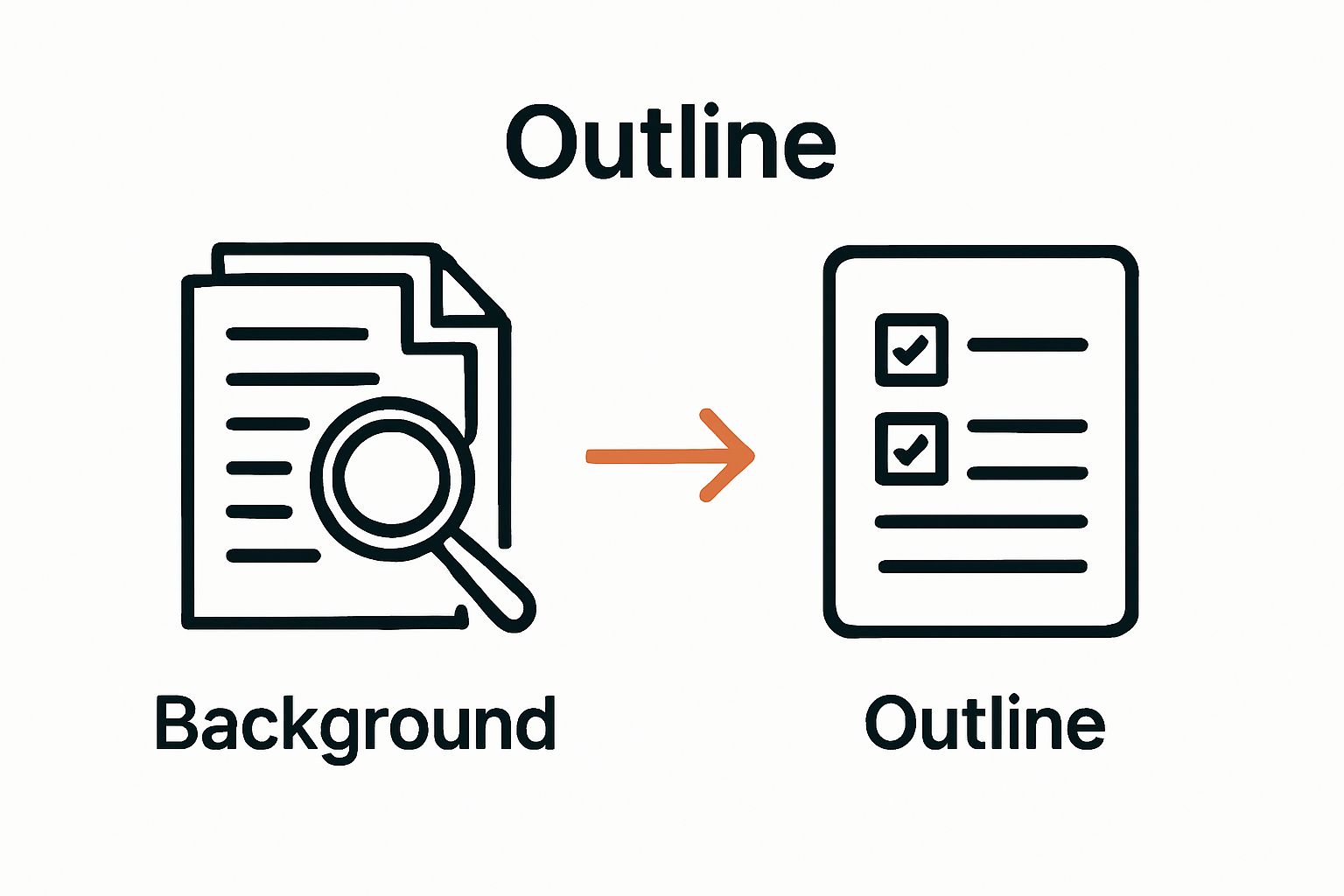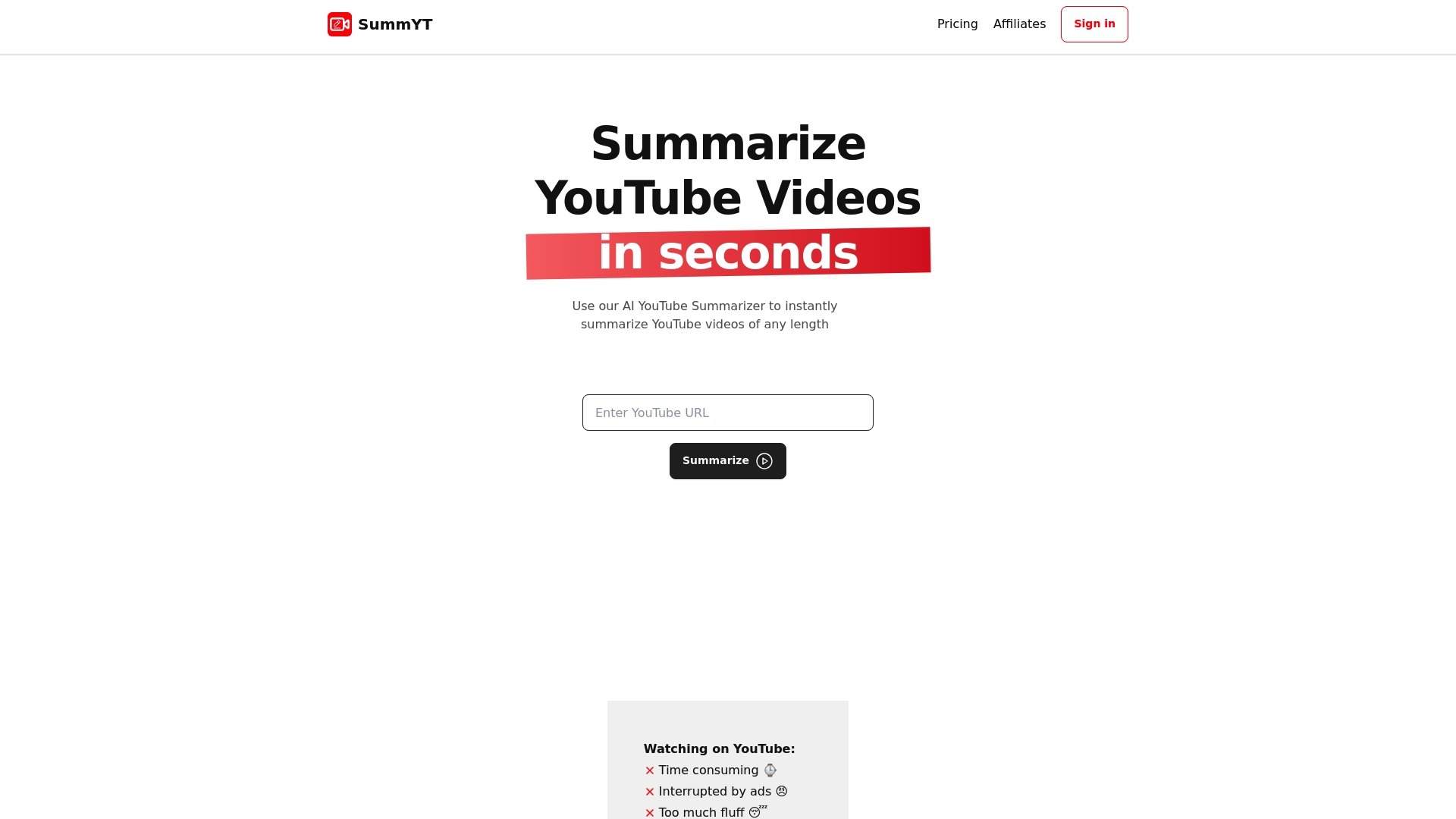How to Summarize Policy Reports for Effective Communication

Summarizing a policy report sounds simple until you realize how much detail you could miss with just a quick skim. Most people do not know that executive summaries can hold up to 80 percent of a report’s key information in just 20 percent of the total text. Yet grabbing the headline points is actually only the starting line. The real secret is that what you leave out—and how you structure what’s left—can make or break whether anyone actually understands the policy’s core message.
Table of Contents
- Step 1: Gather Essential Background Information
- Step 2: Identify Key Themes and Findings
- Step 3: Extract Relevant Data and Statistics
- Step 4: Create a Structured Summary Outline
- Step 5: Draft the Policy Report Summary
- Step 6: Review and Refine the Summary for Clarity
Quick Summary
| Key Point | Explanation |
|---|---|
| 1. Gather comprehensive background information. | Start with thorough research to understand the policy’s context, stakeholders, and challenges. This helps capture essential details for an accurate summary. |
| 2. Identify core themes and significant findings. | Focus on the policy’s main arguments and recommendations by analyzing key sections for recurring ideas and statistical evidence. |
| 3. Extract relevant data and statistics precisely. | Locate and document important data that supports the policy’s claims, ensuring to capture contextual details and original sources for credibility. |
| 4. Create a structured summary outline. | Develop a clear hierarchical outline that reflects the policy report’s flow, facilitating concise and logical summarization of critical points. |
| 5. Review and refine for clarity. | Edit your draft multiple times, focusing on clarity and conciseness to ensure the summary communicates the key messages effectively without losing meaning. |
Step 1: Gather Essential Background Information
Summarizing policy reports effectively begins with comprehensive background research. This critical first step establishes the foundation for understanding the policy’s context, significance, and potential implications. Without thorough background gathering, your summary risks missing crucial nuances and failing to communicate the report’s core message.
Start by acquiring the complete original policy report from its official source. Government websites, institutional archives, and official policy repositories are excellent starting points. Look for the most recent version of the document, paying close attention to publication dates and version numbers. Prioritize official documents over secondary interpretations to ensure accuracy.
While reviewing the document, focus on identifying key elements that provide comprehensive context. These include the policy’s origin, primary stakeholders, historical background, and the specific problem or challenge the policy aims to address. Take detailed notes highlighting the policy’s objectives, proposed solutions, potential implementation strategies, and anticipated outcomes. Create a structured overview that captures the report’s essential narrative without getting lost in granular details.
Research complementary sources to validate and enrich your understanding. Academic journals, expert commentaries, and related policy analyses can offer valuable perspectives that illuminate the broader context. According to Policy Studies Organization, cross-referencing multiple sources helps create a more nuanced and comprehensive summary.
Pay special attention to these critical background research elements:
- Institutional context and policy development timeline
- Key decision makers and their organizational roles
- Regulatory or legislative frameworks relevant to the policy
- Potential economic, social, or political implications
- Previous iterations or related policies in the same domain
Document your research systematically. Create a structured notes document that organizes information chronologically, thematically, or by significance. This approach will streamline the subsequent summarization process and help you maintain a clear, logical narrative flow when condensing the policy report.
Successful background research is marked by a holistic understanding that goes beyond surface-level information. You should be able to articulate the policy’s core purpose, key stakeholders, potential challenges, and broader implications confidently and concisely.
Step 2: Identify Key Themes and Findings
After gathering comprehensive background information, the next critical step in summarizing policy reports is identifying the core themes and significant findings. This phase transforms raw data into a coherent narrative that captures the report’s essential messages and strategic insights.
Begin by carefully reading through the entire document, marking sections that represent pivotal arguments, data points, or recommendations. Resist the temptation to copy text verbatim - your goal is to distill complex information into clear, digestible concepts. Look for recurring ideas, statistical evidence, and transformative recommendations that represent the policy’s central thrust.
Utilize active reading techniques to extract key themes. Underline or highlight critical passages that represent major conclusions, policy recommendations, or significant research findings. Create a separate annotation document where you can capture these insights, organizing them by their strategic importance and potential impact.
Pay special attention to executive summaries, conclusion sections, and sections with data visualizations or statistical analysis. These areas often encapsulate the most critical findings and provide a concentrated view of the policy’s core message. According to International Policy Analysis Center, executive summaries typically contain 80% of a report’s most crucial information in just 20% of its total text.
Develop a systematic approach to theme identification:
- Examine policy objectives and stated outcomes
- Analyze quantitative and qualitative evidence supporting key arguments
- Identify potential challenges or implementation barriers
- Recognize interconnected themes across different report sections
- Note minority viewpoints or alternative perspectives presented
Consider the broader context when interpreting themes. A policy report is more than a collection of facts - it represents a strategic response to complex societal, economic, or organizational challenges. Look beyond surface-level recommendations to understand the underlying rationale, potential long-term implications, and strategic thinking driving the policy.
Verify your theme identification by creating a concise summary that captures the report’s main arguments, key findings, and primary recommendations. If you can articulate the policy’s core message in two to three sentences, you have successfully extracted its essential themes. This synthesis demonstrates a deep understanding of the document and prepares you for the next stage of creating a comprehensive summary.

Step 3: Extract Relevant Data and Statistics
Data and statistics form the backbone of credible policy reports, transforming abstract concepts into concrete evidence. This step requires a strategic approach to identifying, interpreting, and extracting numerical information that substantiates the policy’s arguments and recommendations.
Precision is paramount when working with statistical information. Begin by locating dedicated data sections, graphs, tables, and appendices within the policy report. These resources often contain the most robust and directly relevant quantitative evidence supporting the policy’s central arguments. Pay special attention to charts, infographics, and comparative data that illustrate trends, impact assessments, or projected outcomes.
Develop a systematic method for data extraction. Create a separate document or spreadsheet where you can transcribe key statistical findings, ensuring you capture their full context. Include not just the numbers, but also their source, date of collection, and any important methodological details that provide credibility to the data.
Critical considerations during data extraction include verifying the reliability of statistical sources, understanding the methodology behind the numbers, and recognizing potential limitations or biases in data collection. According to Statistical Research Foundation, effective data interpretation requires looking beyond raw numbers to understand their broader contextual implications.
Pay special attention to these data extraction elements:
- Baseline measurements and comparative statistics
- Trend analysis and historical data points
- Projected future scenarios and potential impacts
- Demographic or sectoral breakdown of information
- Margin of error and statistical significance
Context transforms raw data into meaningful insights. When extracting statistics, consider how each data point contributes to the policy’s overall narrative. Look for numbers that reveal underlying challenges, demonstrate the need for intervention, or illustrate potential outcomes of proposed solutions.
Verify the accuracy and relevance of your data extraction by cross-referencing with other sections of the report and external sources. A successful data extraction process will provide a clear, numerically supported understanding of the policy’s key arguments. You should be able to articulate the most significant statistical findings concisely, demonstrating how these numbers substantiate the policy’s core recommendations and strategic approach.
Step 4: Create a Structured Summary Outline
Transforming the complex information gathered from a policy report into a clear, digestible summary requires a strategic approach to outlining. This critical step bridges the gap between raw information and a coherent narrative that communicates the policy’s core message effectively.
Organize your outline with precision and clarity. Begin by creating a hierarchical structure that reflects the policy report’s natural progression. Start with a high-level overview that captures the report’s primary purpose, followed by main sections that break down key themes, findings, and recommendations. Your goal is to create a skeleton that can be easily fleshed out with the most important information.
Consider the typical structure of policy summaries, which typically include an introduction, background context, key findings, analysis, and recommendations. Each section should flow logically, with clear connections between ideas. Use concise headings that immediately communicate the content of each section, allowing readers to quickly grasp the summary’s core message.
Utilize digital tools to streamline your outlining process. While traditional word processors work well, specialized outlining software can provide additional flexibility. According to Policy Research Institute, effective policy summaries prioritize clarity and concision over excessive detail.
Key elements to include in your structured outline:
- Clear and descriptive section headings
- Brief subsections highlighting critical findings
- Space for key statistical evidence
- Potential implementation recommendations
- Implications and future considerations
As you develop the outline, remain vigilant about maintaining objectivity. Avoid injecting personal opinions or interpretations that are not directly supported by the original policy report. Your outline should serve as a neutral, fact-based representation of the document’s core content. Learn more about creating effective outlines for reports to refine your approach further.
Verify the effectiveness of your outline by asking critical questions: Does it capture the report’s main message? Can a reader understand the key points without reading the full document? Can you explain the policy’s core recommendations in two to three sentences? If you can confidently answer yes to these questions, you have successfully created a structured summary outline that transforms complex policy information into an accessible, meaningful narrative.

Step 5: Draft the Policy Report Summary
Drafting a policy report summary transforms your carefully collected research and structured outline into a concise, powerful narrative that communicates complex information effectively. This step requires a delicate balance between comprehensive coverage and remarkable brevity.
Precision is your greatest ally when drafting the summary. Begin by translating your outline into a coherent narrative that captures the policy report’s essence. Focus on creating clear, direct sentences that communicate key findings, recommendations, and implications without unnecessary complexity. Your goal is to distill intricate policy details into an accessible, compelling story that resonates with diverse readers.
Write the summary in a neutral, objective tone that prioritizes factual information over personal interpretation. Start with a strong opening paragraph that immediately establishes the policy’s core purpose, primary stakeholders, and fundamental challenge. This initial section should provide readers with an instant understanding of why the policy matters and what problems it seeks to address.
According to Policy Communication Research Center, effective summaries maintain a balance between technical accuracy and readability. Avoid dense technical language and academic jargon that might alienate readers who are not subject matter experts.
Key components to include in your draft:
- A concise introduction explaining the policy’s context
- Primary objectives and expected outcomes
- Critical statistical evidence supporting key arguments
- Potential implementation strategies
- Anticipated challenges and mitigation approaches
Explore techniques for creating clear report presentations to enhance your summarization skills. As you draft, continuously ask yourself: Can a person with no prior knowledge of this policy understand its core message after reading this summary?
Verify the draft’s effectiveness by conducting a simple test. Read the summary aloud and time yourself. An ideal policy report summary should take no more than 3-5 minutes to read. If your draft exceeds this time, it requires further condensation. A successful summary transforms complex policy information into a clear, engaging narrative that informs and motivates action.
Step 6: Review and Refine the Summary for Clarity
Refining your policy report summary is a critical process that transforms a good draft into an exceptional communication tool. This step involves meticulous review, strategic editing, and a commitment to crystal-clear communication that makes complex information accessible to diverse audiences.
Objectivity and precision are your primary editing goals. Begin by stepping away from your draft for a short period, allowing yourself to approach the text with fresh eyes. When you return, read the summary multiple times, focusing on different aspects during each review. First, examine the overall structure and logical flow. Then, scrutinize individual sentences for clarity, concision, and directness.
Eliminate unnecessary words, technical jargon, and convoluted sentence structures that might obscure your message. Each sentence should serve a specific purpose, either providing context, presenting key findings, or explaining recommendations. Be ruthless in cutting content that does not directly contribute to the summary’s core narrative.
According to Policy Communication Research Institute, effective summaries maintain a delicate balance between comprehensiveness and brevity. Your editing process should prioritize clarity over completeness, ensuring that every word counts.
Key refinement strategies include:
- Reading the summary aloud to identify awkward phrasing
- Checking for consistent tone and voice
- Verifying all statistical claims against original sources
- Ensuring logical progression of ideas
- Confirming alignment with the original policy report
Learn more about creating concise communication to further enhance your skills. Consider asking a colleague or subject matter expert to review your summary, providing an external perspective that can reveal hidden complexities or unclear sections.
Verify the summary’s effectiveness by applying a simple test. Can someone with no background in the policy’s domain understand the key points within three minutes of reading? If the answer is yes, you have successfully refined your summary into a clear, powerful communication tool that bridges complex information and broad understanding.
Below is an at-a-glance checklist summarizing the key verification steps to ensure your policy report summary is accurate, clear, and effective before finalization.
| Verification Step | Purpose | How to Complete |
|---|---|---|
| Review structure and flow | Ensure logical progression and comprehensive coverage | Read the summary focusing on overall organization |
| Eliminate jargon and unnecessary words | Improve clarity and accessibility | Edit sentence by sentence, removing complex terms and filler |
| Cross-check statistical claims | Maintain accuracy and credibility | Compare data with original report and sources |
| Confirm neutral tone | Avoid personal interpretations | Ensure statements are factual and objective |
| Seek external feedback | Gain an outside perspective on clarity | Ask a colleague or subject matter expert to review |
| Test readability and timing | Make summary concise and user-friendly | Read aloud; confirm it can be understood in under 3 minutes |
| Align content with original report | Ensure coverage of all main points | Double-check against the original policy document |
Take Your Policy Summaries to the Next Level With AI-Powered Video Insights
Struggling to turn dense data, key themes, and complex findings into clear policy summaries? You are not alone. Many professionals spend countless hours gathering information, extracting statistics, and drafting outlines, only to feel overwhelmed by the sheer volume of content—especially when much of it is locked in long video lectures, interviews, or webinars. The challenge lies in transforming these insights into clear, actionable reports while meeting tight deadlines and maintaining accuracy.

Unlock a faster and smarter workflow by letting SummYT do the heavy lifting for you. With SummYT, you can instantly generate precise, structured summaries of essential YouTube content, giving you the edge in background research and data extraction.
- No more wasting time on hours of video
- Instantly access key arguments and supporting statistics
- Streamline your note-taking for each stage of your policy report summary
Ready to sharpen your research, save time, and make your policy report summaries stand out? Visit SummYT and start transforming how you extract and summarize knowledge today.
Frequently Asked Questions
How do I gather essential background information for summarizing policy reports?
To gather essential background information, start by obtaining the original policy report from an official source. Focus on key elements such as the policy’s origin, stakeholders, and historical context to create a solid foundation for your summary.
What are the key themes to identify when summarizing a policy report?
Identify core themes by looking for recurring ideas, significant data points, and major conclusions within the report. Mark crucial sections and summarize them into a concise narrative that highlights the policy’s main arguments and recommendations.
How can I extract relevant data and statistics from a policy report?
Locate dedicated data sections, graphs, and appendices that contain important statistical evidence. Create a document to transcribe key data points, including their sources and context, which will help support the policy’s arguments in your summary.
What is the best way to create a structured outline for my summary?
To create a structured outline, begin with a high-level overview of the report’s purpose and then break down the information into main sections. Use clear headings for each section that reflect the logical progression of the report.
How should I draft my policy report summary to ensure clarity?
Draft your summary by writing clear, direct sentences that convey the policy report’s core message. Aim to communicate key findings and recommendations succinctly, ensuring that someone unfamiliar with the subject can understand the main points easily.
What steps should I take to review and refine my summary?
Review your summary by reading it multiple times, focusing on structure and clarity. Cut unnecessary content, ensuring each sentence supports the main narrative, and consider seeking feedback from a colleague to identify any unclear sections.



